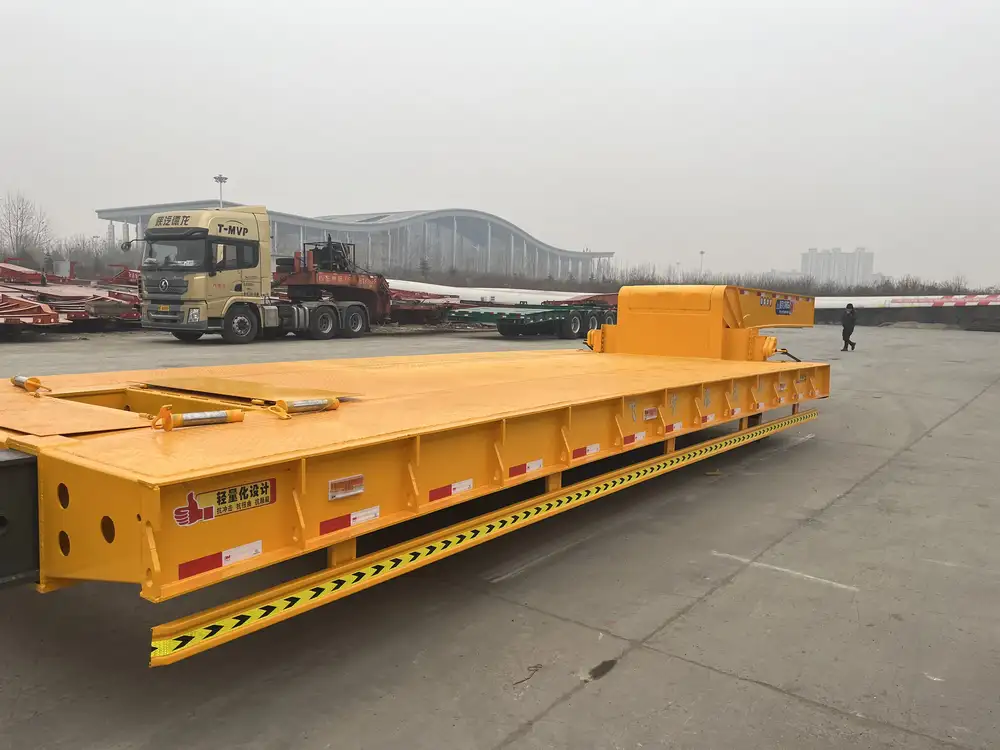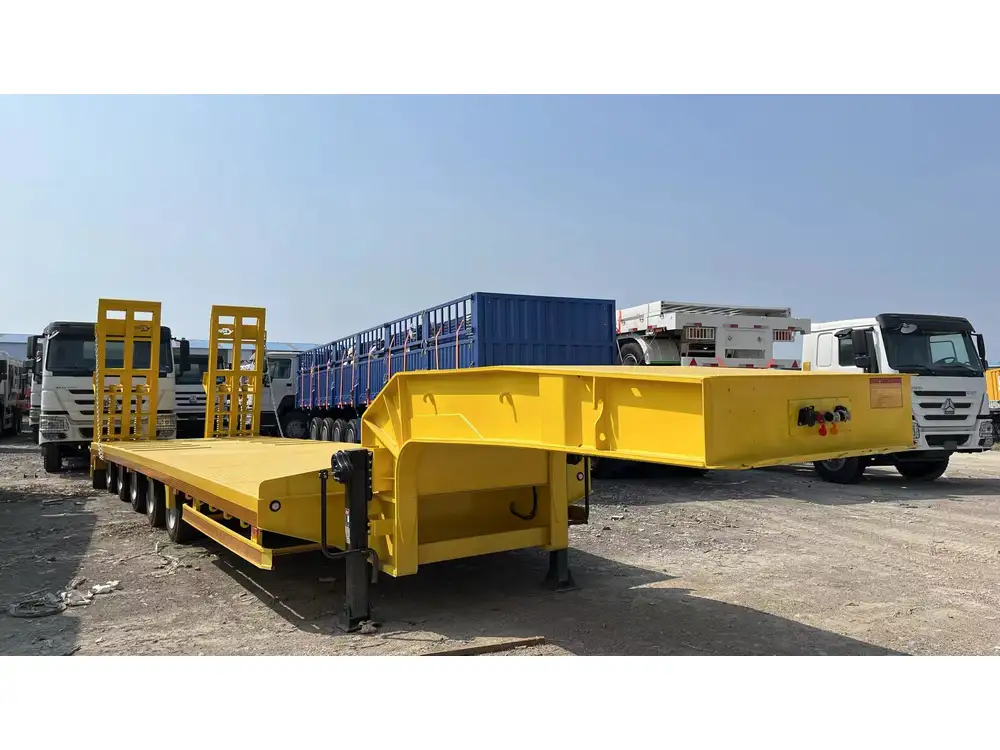In the world of logistics and transportation, weights and measures can often become a maze of calculations and standards. For those working with semi-trucks, understanding the weights involved is not just a technicality—it’s fundamental to compliance, efficiency, and safety. This article seeks to provide you with a comprehensive understanding of how much a semi-truck weighs without a trailer, exploring the various elements impacting weight metrics and their implications for the trucking industry.
The Basics: What is a Semi Truck?
A semi-truck, often referred to as a tractor-trailer or an 18-wheeler, is a combination of two basic components: the tractor, which is the engine and cab, and the trailer, used for cargo transport. While the focus here is on the weight of the semi truck without the trailer, appreciating the truck’s overall design helps contextualize the answer to the weight question.
Components of a Semi Truck
- Tractor Unit: The front part of the semi, containing the engine, cab, and driving controls.
- Chassis: A tough frame that supports the tractor’s components and the trailer when attached.
- Axles: Generally, semi-trucks have two drive axles and one or more steering axles, influencing overall weight distribution.
- Cab & Driver’s Compartment: Housing for the driver and various operational controls that add to the truck’s weight.

How Much Does a Semi Truck Weigh Without a Trailer?
A standard semi truck, devoid of any trailer, generally weighs between 10,000 to 25,000 pounds, depending on its configuration and specifications. The average weight is usually around 15,000 to 20,000 pounds. Here’s a breakdown of the factors affecting this weight range:
| Factor | Description | Weight Contribution |
|---|---|---|
| Engine | The size and type of the engine contribute significantly, with larger engines weighing more. | 2,000 – 3,000 lbs |
| Cabin Design | Cab styles (conventional vs. cab-over) and materials (steel vs. aluminum) can alter weight. | 1,500 – 2,500 lbs |
| Axles | The number of axles influences the weight; a truck with more axles will generally weigh more. | 1,000 – 1,500 lbs |
| Fuel Capacity | Trucks come equipped with saddlebags for fuel; fully loaded can add weight. | 1,500 lbs (full tank) |
| Additional Features | Features such as larger tires, custom build specs, and added technologies can increase weight. | 500 – 2,000 lbs |
Average Weight Distribution of Components
- Engine (2,500 lbs): The truck’s heart, where power meets propulsion.
- Cab & Interior (2,000 lbs): Comfort and functionality for the driver.
- Chassis and Frame (6,000 lbs): The structural integrity that holds everything together.
- Fuel Tanks (1,000 lbs): Depending on capacity; more fuel equals more weight.
- Axles and Suspension (3,000 lbs): Integral for load distribution and road handling.
When considering the intricacies of semi truck weight, the total can vary based on manufacturer specifications and designs employed in the construction of the truck.
Different Classifications of Semi Trucks
Semi trucks are classified into weight categories which can directly affect their operation capabilities, licensing requirements, and appropriate uses. Here’s a breakdown:
| Classification | Gross Vehicle Weight Rating (GVWR) | Characteristics |
|---|---|---|
| Class 7 | Up to 26,000 lbs | Often used for local deliveries, smaller cargo loads. |
| Class 8 | Exceeds 26,000 lbs | The most common in long-haul trucking, robust construction. |
Understanding these classifications is crucial for operators when determining compliance with federal and state regulations, as well as for ensuring safe and effective load management.

Importance of Knowing the Weight
Regulatory Compliance
Federal and state regulations dictate maximum weight limits for trucks on highways, affecting safety and efficiency. Knowing the weight of a truck without a trailer helps ensure compliance, avoiding heavy fines or potential accidents.
- Federal Bridge Formula: Used to calculate maximum allowable weight based on the number of axles, spacing, and overall design.
- State Regulations: Vary by state, adding complexity to weight management across different jurisdictions.
Operational Efficiency
Understanding the weight of the vehicle contributes to operational efficiency, particularly regarding fuel consumption and load management. Every pound counts when calculating the total load a semi truck can carry, influencing logistics decisions significantly.

Maintenance and Longevity
Too much weight can accelerate wear and tear on components, leading to costly repairs. Maintaining awareness of weight limits contributes to maintaining the vehicle’s condition over time.
Considerations for Weight Management
Load Capacity Calculation
When determining how much cargo a semi-truck can safely carry, begin with the truck’s Gross Vehicle Weight Rating (GVWR). Subtract the truck’s weight from the GVWR to find the maximum payload capacity.
- GVWR: 80,000 lbs (common limit on highways)
- Truck Weight: 15,000 lbs (as mentioned earlier)
- Payload Capacity: [ 80,000 \text{ lbs (GVWR)} – 15,000 \text{ lbs (Truck Weight)} = 65,000 \text{ lbs (Maximum Payload)} ]

Equipment Weight Managment
When configuring a truck for specific operations, consider the weight of additional equipment such as:
- Reefer Units: For refrigerated cargo, adding around 2,000 – 3,000 pounds to the overall truck weight.
- Specialized Chassis: Trailers designed for specific loads can have additional weight ramifications.
Roadbases & Surface Impacts
The weight of the truck affects road wear and tear. Heavier trucks can lead to increased maintenance costs for road infrastructure, necessitating stricter enforcement of weight regulations to protect public resources.
Common Myths Surrounding Semi Truck Weights

“All Semi Trucks Weigh the Same”
This is a misunderstanding; weight can vary significantly based on manufacturer specifications, truck design, and additional equipment.
“Weight Doesn’t Affect Fuel Efficiency”
A heavier vehicle requires more fuel, directly impacting operational costs and efficiency. Every operator must account for weight when calculating routes and schedules.
“The Maximum Load is Only a Suggestion”
Staying within weight limits is crucial for safety. Overloading not only risks penalties but also jeopardizes the safety of the driver and everyone on the road.

The Final Weight Factor: Conclusion
Understanding how much a semi-truck weighs without a trailer—usually falling within the range of 10,000 to 25,000 pounds—encompasses a complex web of details. Variability in specifications, components, and regulatory frameworks plays a significant role in determining actual weight metrics. By grasping these concepts and applying knowledge of weight management effectively, trucking professionals can enhance operational efficiency, ensure compliance, and maintain safety on the road.
In consideration of the immense variation in the design and construction of semi trucks, those involved in logistics should be proactive in staying informed about their vehicles’ specifications and weights, adjusting practices and planning accordingly.
By navigating the complex landscape of semi truck weights, users can make informed decisions that not only comply with regulatory requirements but also promote an efficient, safe, and sustainable logistics process.



